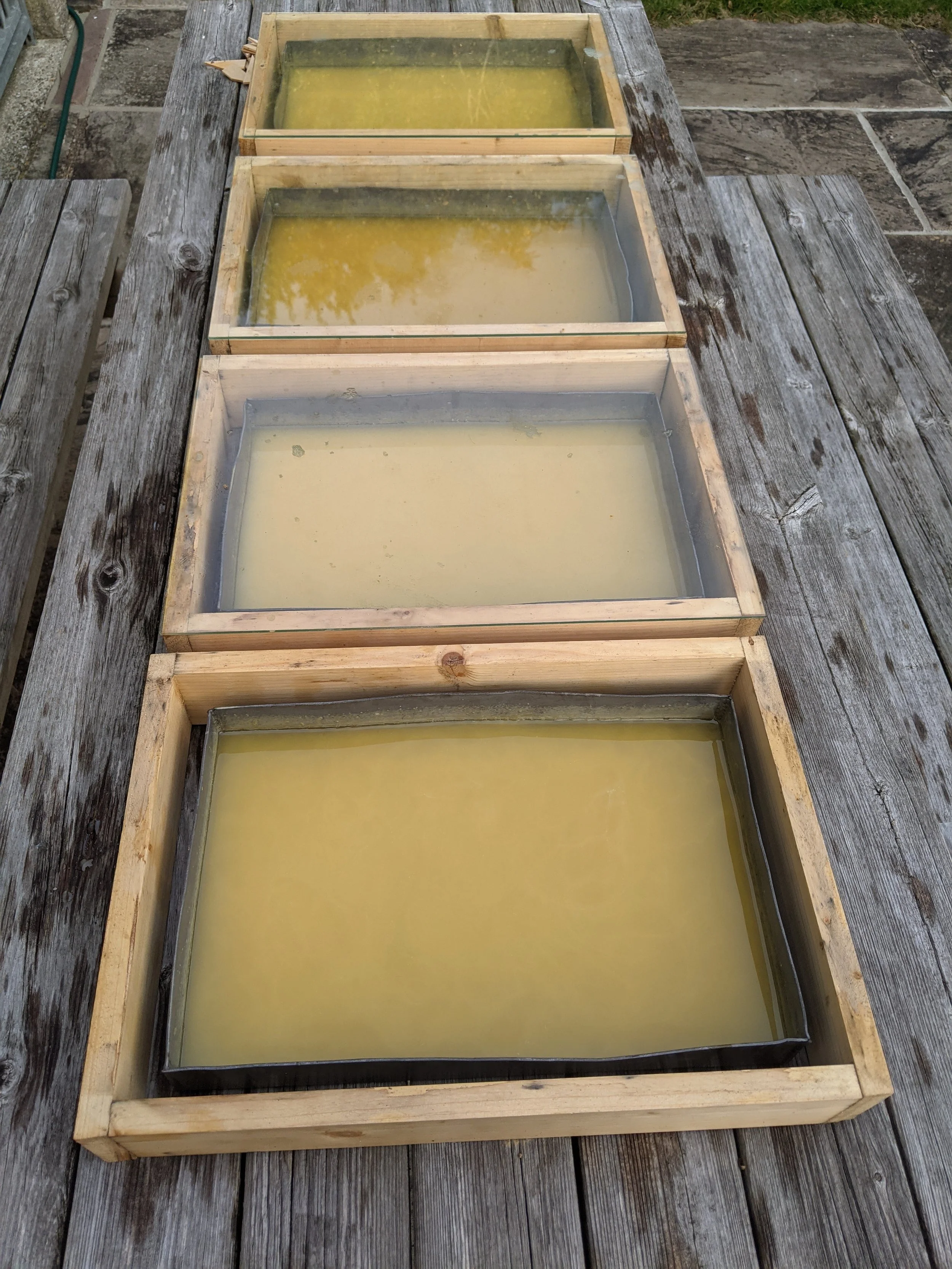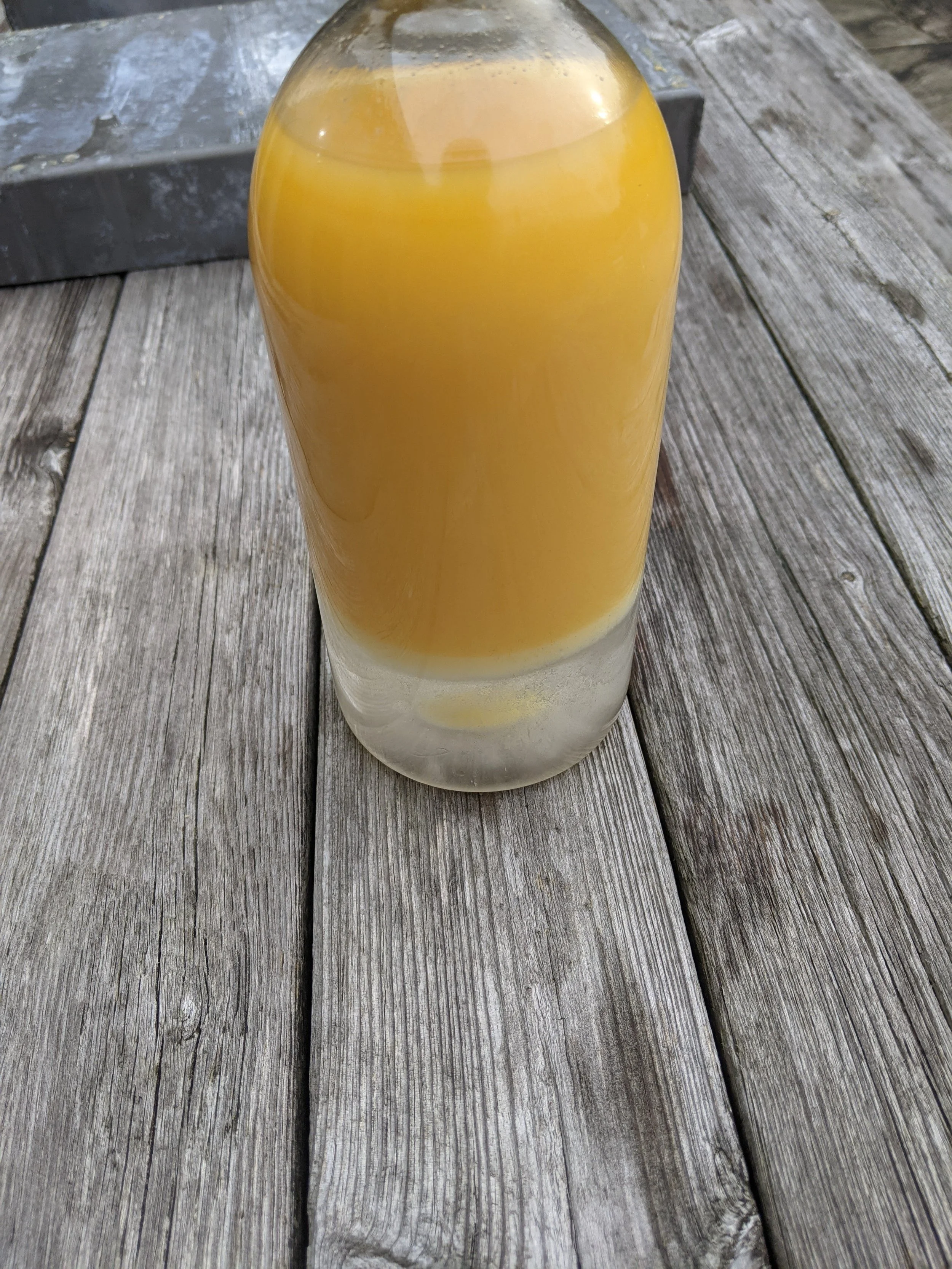Not your average artist, Not your average materials
Artist Statement
Oliver Raw is a classically trained portrait and landscape painter based in Kent.
Oliver’s ultimate goal is for his way of life and his art to be inseparable. The artist’s creative drive is intrinsically linked to his connection to self. It is only through developing a deep, penetrating understanding of himself that he can exist in a space of spiritual flow. It is from this space that the artist cultivates landscapes that are created from a combination of an introspective subconscious state and the plein air landscape. Oliver practices mindfulness and prayer daily to deepen this connection with himself and to remove any unnecessary associations. As a result, his landscapes often explore spaces that promote feelings of freedom, offering a respite from the fast paced times we find ourselves in today.
Seeking a more intentional, quiet and focused life, Oliver moved to the countryside in 2022, to a converted barn studio where he designed ideal conditions to carry out more ambitious lifesize portraiture. From his studio, Oliver welcomes sitters for commissioned work with his unique ability to put all at ease. Here, Oliver uses his chosen method sight-size, famously used by John Singer Sargent. Oliver’s working method allows for a characterisation of likeness, expressive handling and unity of visual impression.
As the light gets harsher in the Summer, making portrait painting challenging even under carefully designed studio conditions, Oliver turns his attention to landscape painting. He favours remote, raw and rugged locations such as the Alps, Scottish Highlands and Croatian islands. The diversity of landscape provides a fresh perspective and inspiration, from which he can develop romantic themes and focus on fleeting light effects.
The artist works in oil and charcoal. He has a deep passion for the technical manipulation of raw materials and so makes his own canvases, grinds his own paint and makes his own painting mediums to achieve archival quality and healthy, long lasting paintings.
Oliver’s interest in portraiture and archival quality stems from five years of rigorous classical training in Florence under Charles Cecil as both student and teacher. Prior to this Oliver studied Art History at the University of Manchester, exploring an “objective criteria for beauty” to better contextualise his work as a painter. For portraiture his artistic influences include Titian, Velasquez, Rembrandt and Singer Sargent. For landscape work, Oliver looks towards George Inness, Camille Corot and Monet.
Bespoke . handmade . archival . original .
Pigment
I grind my own paint on toughed glass with a mull, using the highest quality pigments and cold pressed linseed oil.
My main palette consists of ivory black, genuine red vermillion (sourced from a disused mine in Monte Amiata), Italian yellow ochre and flake Lead white.
Canvases
I hand prepare my canvases from raw linen in my studio. It is a multi-stage, month long process which includes layers of rabbit skin glue, tinted gesso which is 50% lead white and 50% chalk and comes from Bizzari, a 19C Italian apothecary.
Framing
I work with a handful of highly trained framers, many associated with the Master Guild of Craftsman. In the studio, I have frame samples to show clients and guide them on how to choose the most suitable frame for their commission. The frame is then made bespoke and I unite frame and commission in the studio for clients to collect.
The Sight-Size method
I work from life, sight size, with canvas and subject placed side by side and viewed together at a distance. This method facilitates me being able to see a unified image to scale and proportion.
Much like John Singer Sargent, I observe this comparison from varying distances before pacing forward to transfer the impression of what I see onto the canvas.
“Sargent, when he painted the size of life, placed his canvas on a level with the model, walked back until canvas and sitter were equal before the eye, and was able to estimate the construction and values of his representation... Painters often deplore the loss of tradition, and speak with regret of the days when artists ground their own colours; but knowledge of the visual methods of the older painters, rather than of their technical practices, seems to me of equal, if not greater importance. The methods of Velazquez and Hals were not unlike Sargent’s.”
Sir William Rothenstein, Men and Memories, Faber & Faber, London, 1932, pp. 192-3.
Painting Medium
A medium is added to paint to manipulate how it behaves on the canvas. The medium I use affects gloss, depth, brushwork, drying times and how paint fuses together.
I make my medium in the studio by combining sun thickened linseed oil, Canada balsam, Chios mastic and rectified turpentine. Below you can see the process for making the oil.
The physician Sir Theodore de Mayerne, who sat for a portrait by Rubens recorded the painting medium of both Rubens and Van Dyck in his manuscripts. Rubens was painting with something close to a sun thickened linseed oil, a fur balsam, strausburg turpentine and Chios mastic. Rubens passed this knowledge to his student Van Dyck and then, in the court of King Philip IV, likely shared it with Velasquez.
My medium is based on Ruben’s medium, adapted by my teacher Charles Cecil, student of R H Ives Gammell, a connection of Singer Sargent.
Studio Preperation:
Sun thickened linseed oil
In Cennini's craftsman's handbook, of sun-thickened linseed oil, the artist said "I can give you nothing better". The favoured, time tested age old medium of canonical painters Peter Paul Rubens and Anthony Van Dyck.
Sun thickened linseed oil in made by cooking cold pressed linseed oil in sheets of lead through oxidisation, polymerisation, infusion of lead and sun bleaching.
“THe object isn’t to make art, it’s to be in that wonderful state which makes art inevitable”
— Robert Henri







